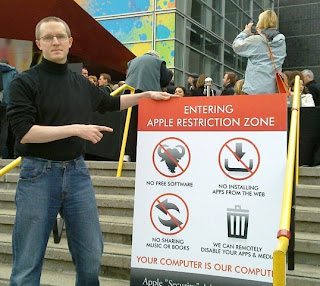Once again, it's the time of year for reflection and predictions. I always enjoy reading what others thought about the past year and what they're expecting from the year ahead. With so many interesting happenings in technology in general, and specifically in the Internet space, it's a fun task.
2010 – Year of the Consumer
2010 could be termed the Year of the Consumer with vendors introducing consumers to location-based services (Foursquare, GoWalla), social couponing (Groupon), and a vast array of apps. Apple's iPad changed the game for apps on both web and mobile devices, creating incredible consumer demand. Coupled with the mainstream evolution of smartphones, this demand has launched an explosive market opportunity.
On the development side, there has been a lot of noise about HTML5 and CSS3. All the big guys are behind this, and Adobe even has a tool that converts Flash to HTML5. The popularity and compatibility of HTML5 is increasing every day, but there is still a ways to go before it becomes mainstream.
And let's not forget cloud computing. For the past few years, the technology for cloud computing has been maturing and slowly adopted by many companies. Evidenced by the new TV commercials, cloud computing is now an accessible infrastructure that enables web companies of all sizes to scale relatively easily. And pretty much everybody is using it now.
Top Predictions for 2011
If 2010 was the Year of the Consumer, 2011 will see the inevitable market impact of this shift. New technologies will emerge, and only those with the best user interfaces and marketing strategies will survive. I expect that app mania will continue and businesses of all sizes will expand their footprint on mobile and web platforms.
My Top Ten predictions are:
- HTML5 in action. Browser support for HTML5 is getting better (in both desktop and mobile browsers), so we will start seeing HTML5 and CSS3 more and more in mainstream Web applications. Life for Web developers will finally be (a bit) easier, and user experience across platforms will converge and improve, although not fast enough.
- Tablet wars will get serious. Apple currently has 95% of the market, but that's because they have been the only real player in the market. That's changing fast with Samsung and others debuting their own tablets. Who will dominate in 2011? Still Apple, especially if/when they launch iPad 2. Dell, Samsung, and HP will be the other major players there.
- Android will gain more market share and close the gap with iPhone, but will not overcome it. They aren't doing enough to appeal to the non-techies.
- Mobile and web platforms will continue to converge. The web has become ubiquitous so there will be less of a fine line between web and mobile. This has already started with the iPad (is it a mobile device?) and will crossover to other devices like Google's Chrome OS notebook (which still has a ways to go before it can become popular).
- The number of app platforms will expand: smartphones, e-readers, televisions, Blu-ray players. I'm not sure we'll see apps in the fridge or washing machine in 2011, but who knows... I look forward to CES in January.
- More of our information will be stored in the cloud, and streaming services will increase in popularity. This includes photos, documents, music, and maybe even videos. The pricing will need to become more competitive to make this prediction come true.
- Social analytics. We need easier ways to measure and analyze people's interactions in social networks (person-to-person and person-to-brand). This year, we'll start seeing some successes and standardization in this area (which will probably lead to Google acquiring the leader).
- Richer TV experiences. Google TV, Apple TV, and Boxee are all working hard to create richer television experiences for us. These products may not yet become mainstream, but will no longer be novelties reserved for hardcore geeks, either. 3D television will not become more popular as some people are expecting.
- We will start to see actual adoption of peer-to-peer micro payment systems (Square, for example). It will become more and more popular to just pull out your cell phone when you want to pay for a cup of coffee. This year, though, there probably will be more people accepting payments than people actually paying, but that's the first step towards replacing our old-school credit cards.
- Maturing of the location-based application market. Foursquare, Gowalla, Loopt, My Town (Booyah), SCVNGR, Facebook Places, Google Places, Yelp, and Groupon are all about the places that people go for deals in their business and personal locales. I think some big players will stay on top (Groupon, and Living Social with the help of Amazon). We'll see some co-operations/mergers, and smaller players will go off to silently die in a corner somewhere. Groupon clearly intends to dominate after sending Google packing.
Happy New Year!

























